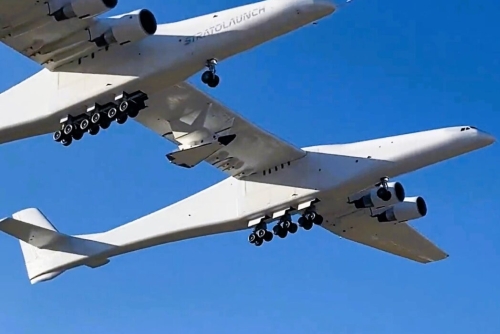Falcon Heavy launches successfully for 1st time since 2019
Capitalism in space: SpaceX today successfully put a military reconnaissance satellite using its Falcon Heavy rocket, its first launch since 2019.
The two side boosters and core stage all made their first flight. The core stage was intentionally not recovered, as it needed to use all its fuel for getting the satellite to its orbit. The two side boosters successfully landed at SpaceX’s two landing sites at Cape Canaveral.
The leaders in the 2022 launch race:
50 SpaceX
47 China
18 Russia
8 Rocket Lab
7 ULA
American private enterprise now leads China 70 to 47, though it still trails the rest of the world combined 74 to 70.
This year’s 70 successful launches ties the previous high for the United States in a single year, set in 1966. With two months still left in the year, it looks like that record will be broken, by a lot.
Capitalism in space: SpaceX today successfully put a military reconnaissance satellite using its Falcon Heavy rocket, its first launch since 2019.
The two side boosters and core stage all made their first flight. The core stage was intentionally not recovered, as it needed to use all its fuel for getting the satellite to its orbit. The two side boosters successfully landed at SpaceX’s two landing sites at Cape Canaveral.
The leaders in the 2022 launch race:
50 SpaceX
47 China
18 Russia
8 Rocket Lab
7 ULA
American private enterprise now leads China 70 to 47, though it still trails the rest of the world combined 74 to 70.
This year’s 70 successful launches ties the previous high for the United States in a single year, set in 1966. With two months still left in the year, it looks like that record will be broken, by a lot.

